“Nothing Is Impossible”: ‘RRR’ Director S.S. Rajamouli Talks About His Spectacular Action Epic And Reveals That The Ecstatic U.S. Reception Has Inspired A Sequel
- Oops!Something went wrong.Please try again later.
- Oops!Something went wrong.Please try again later.
- Oops!Something went wrong.Please try again later.
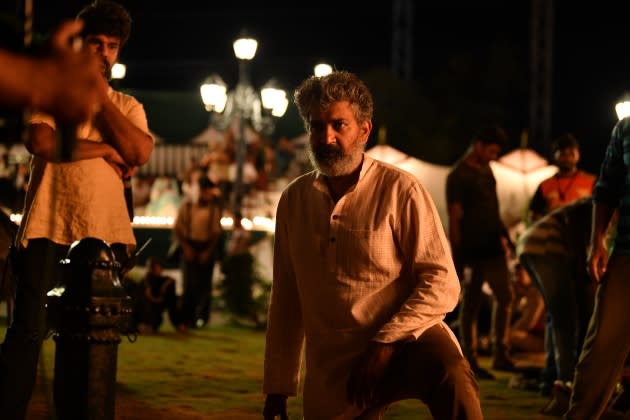
Seeing is disbelieving when it comes to RRR, an Indian blockbuster set during the rule of the British Raj. Starring Telugu icons Ram Charan and N.T. Rama Rao Jr. (N.T.R.), it’s a lavish adventure based loosely — very loosely — on two legendary Indian freedom fighters of the early 20th century, Alluri Sitarama Raju (Charan) and Komaram Bheem (N.T.R). Whether these two ever did drive motorcycles through exploding trains, fight with lions and tigers and bears, and challenge Delhi’s high society to a dance battle is a moot point, but the magic of S.S. Rajamouli’s delirious, incendiary epic — those three Rs stand for Rise, Roar, Revolt — is that it piles on the spectacle without ever losing its sense of fun.
DEADLINE: When did the idea for RRR first come to you?
More from Deadline
S.S. RAJAMOULI: I can’t pinpoint that, really. There were two or three thoughts running in my mind, parallelly. One was that I wanted to do a multi-starrer, bringing two heroes together. That always fascinated me: a story about two heroes. Another idea was when I saw The Motorcycle Diaries: all the while we see the story of a normal young guy, and suddenly the director tells you it is Che Guevara. That was a brilliant idea, and I thought that could be adapted to many, many stories. Then I read the story about Alluri and Komaram. They were born around the same time, and they left their homes around the same time, but we don’t know what happened for a period of two or three years. I thought these coincidences were beautiful, because I could then go into a fictional account of their friendship. What if they met, and what if whatever you saw in RRR actually happened?
DEADLINE: You invent all these amazing set pieces — how do they find their way into a movie?
RAJAMOULI: For me, finding a particular plot of a movie is just an excuse to express my emotions in a very fantastic way. These kinds of ideas are always there, I just need to build a platform on which I can mount them. Once I get a sense of, “OK, we have two freedom fighters whom we look up to like demigods, and I’m going to tell a fictional tale about him,” I don’t need to stick to the facts. The points in the plotline enable me to do the fantastic action sequences. I like to stretch the audience’s imagination as far as possible, and still make them feel for those action sequences. Not just a sense of awe, but also a kind of emotional feeling for the characters as the sequences are going forward.
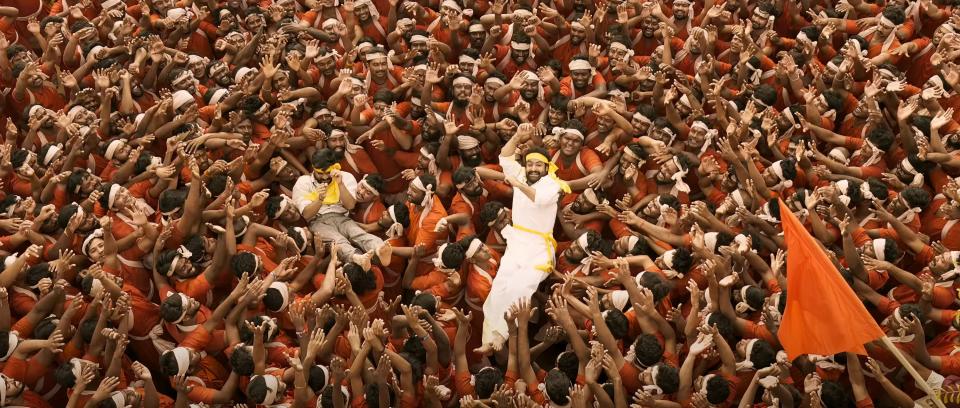
DEADLINE: Have you ever imagined anything that would be impossible to do?
RAJAMOULI: No, nothing is actually impossible. No sequence, no thought is impossible, it’s just that you need to build the audience’s anticipation to get to that particular point. By that point, the audience should be wanting to see it happen on the screen. If you can make that happen, then I don’t think anything is impossible.
DEADLINE: How long did it take to make this film?
RAJAMOULI: We shot for about 320 days. It was spread over a period of three years or so. Because of Covid, we had to stop the film quite a lot of times.
DEADLINE: What was the biggest challenge for you?
RAJAMOULI: I think it’s quite obvious. The wild animal sequence, which disrupts the British aristocrats‘ party, I would say was the most difficult one, in many aspects. For one thing, we were shooting at night. Second, it was a long sequence, so we had to shoot for, like, 45 nights. Then there were about 2,000 extras there, and when they were supposed to react in a certain way for [the CGI] animals that were obviously not there on the day of the shoot. For it all to be believable, they had to all perform in a certain way. To make that happen was quite a challenging task. And we had water hoses flying like the snakes on Medusa’s head. Smoke, fire, all these things put together… I think that’s the most difficult sequence ever!
DEADLINE: Music is a huge part of the movie. How do you work with music?
RAJAMOULI: In Indian films, in particular RRR, we have to divide the music into two parts: the songs and the background score. To start with the background score: the way I form the scenes in my head during the shooting is that I see a kind of flow. Like, “OK, so this [scene] has a slow pace.” Then the narration suddenly picks up pace and suddenly stops, so I want to stop for a moment, then rush into the moment. I always see the scene, and I visualize it in a kind of flow. When I sit with the composer, I try to explain that to him, and, luckily for me, he also talks about the flow of the emotion of the movie or a particular scene. We rarely discuss the actual music of the film. We just discuss things like, “I want to slow down. Is it slow enough?” “I want to rapidly change gears. Is that changing rapidly enough?” These are the conversations we have a lot. I don’t need to give him any instructions — once we are clear on how the flow should be, he comes up with the music. That’s how it happens.
For the songs, in a way, it’s the same thing: “What are we going to convey to the audience with that song and what should the flow be? What should the ebbs be?” [With RRR] things were different, however, because at the beginning of the film we knew that we were going to have a dance song [‘Naatu Naatu’, which recently became the first Indian song to be shortlisted for an Academy Award]. I needed to make it believable, so I had to create a long buildup scene for the song to happen. The song is a story in itself. I explained this to the music director: “I’m not looking it as a song. It should be kind of a fight. Imagine it’s a fight scene, but one where [the fight] can be celebrated.” Those were my instructions for my composer.
DEADLINE: Do you find it easy choreographing these scenes? Is there is a technique for managing so many people?
RAJAMOULI: Obviously, we have help. If it’s a dance sequence, I have a fantastic dance choreographer. But the choreographing of the whole crowd itself, I love to do it. When I’m envisioning the scene, I choreograph in my mind how the crowd is standing or moving, or how it is flowing. I see that. On the day of the shoot, it is quite a pain, because handling a number of people has its own set of challenges. But luckily, I have people who are experienced in dealing with that, particularly my line producers. Both of them are very, very good. We had experience from my previous films, Baahubali 1 & 2, where we dealt with thousands of extras. So we used that experience to deal with them in a good way.
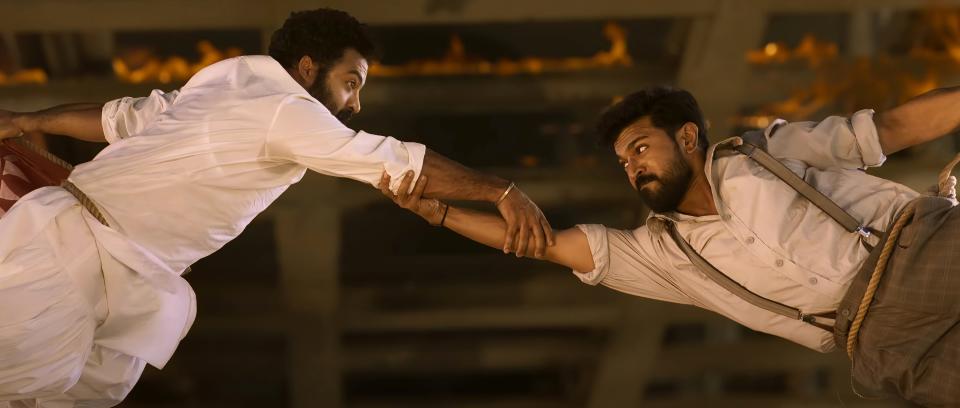
DEADLINE: You’ve got two big stars in the main roles. Was there any ego in this?
RAJAMOULI: Dealing with stars usually would be a big, big problem. Luckily for me, it was not. I’ve worked with both of them before. We had huge successes when we worked together, and we are close. We have been friends for a long time, and apart from that, they both are also friends outside their professional life. In their personal life, they’re friends. So, all these factors worked for me, and I didn’t have any issues with them in such a long period considering the big star status. It was quite a smooth sail.
DEADLINE: That dance sequence would kill a lot of Western actors. I wonder if you ever had a moment where they said, “No, we can’t do this.”
RAJAMOULI: Both of them are very good dancers, but even for them, to leave their styles aside and do it in the exact same manner was a difficult thing. Yeah, they suffered a lot. They complained a lot, but they knew they had to do what has to be done, so they did it.
DEADLINE: Is it true that the “Naatu Naatu” dance has become a bit of a thing?
RAJAMOULI: Yeah, it has. Even before the film released, when we released the song on the net, it went viral. It became a thing for any two people. Whether it’s a mother and daughter, whether it’s two friends, whether it’s a brother and sister, you just put your hand on the shoulder of the other person, do the step, and post it on the social media. There were literally millions of versions of the song. It became a big viral thing and then it faded out. But now it has picked up again and people are doing the dance in different, unimaginable ways and posting it on social media.
DEADLINE: Is this kind of film always what you set out to do? Your earlier films were not always on this scale. When did you realize this is where you wanted to pitch your artistry?
RAJAMOULI: For a very, very long time, I always liked larger-than-life stories or characterizations, even before I came into films. Even in the early stages of my working as an assistant in different departments, I wanted to direct big action sequences, big-scale war films. That was always there. But, obviously, in the early days of my career, I couldn’t do it. There would be no producer who would be willing to put that kind of money into that. Luckily for me, I had success upon success where my market started increasing, and the producers got to know the kind of vision I had. It was not [overnight]. Over a period of years, they knew that I could handle bigger things, so it was a gradual escalation. I always increased my budget a little bit more than the market dictated, and that’s how it happened.
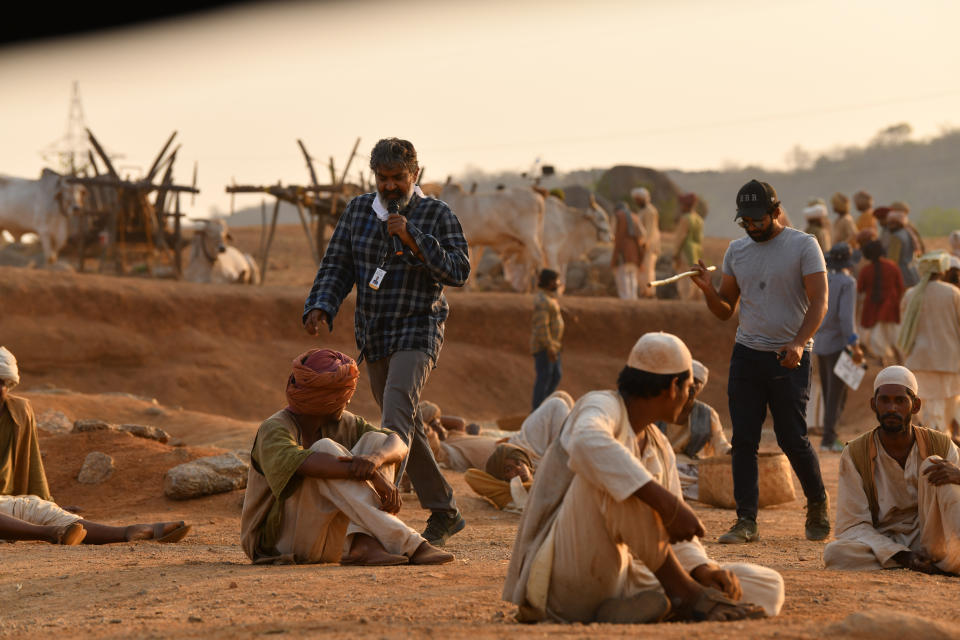
DEADLINE: When did you realize that epic filmmaking was going to be the future for you? When did you realize that you could do whatever you wanted to do?
RAJAMOULI: Like I said, the want was there from the beginning. The realization gradually happened. I would say Magadheera is one of the films which I did, a part-period movie, which was a huge, huge success. And I also did a movie called Eega, which is the story of a housefly taking revenge on a human being, and it was a hugely successful film. So the success of these two films, I think, gave me a lot of confidence [to think] that I could deal with very far-fetched ideas and also deal with very large budgets and make them work. A combination of those two films, I would say.
DEADLINE: What is Tollywood, and where do you fit into it?
RAJAMOULI: [Laughs] I don’t like the word Tollywood. I don’t like the word Bollywood either, but gradually we’ve got used to it. But the point is, in India we have many states. Each state speaks its own language. So each language has a film industry of its own, many of them at least. Many states, about seven to eight, speak one language — Hindi. The Hindi film industry is called Bollywood, and they have a larger market because they have a larger audience. I come from the Telugu film field where we have two Telugu-speaking states and I make Telugu films. Likewise, there are Tamil films being made, there’s the Kannada film industry, the Malayalam film industry, and other film industries, that way. Obviously, because of the increasing number of films being made, Bollywood was the biggest for a long, long period. In the recent past few years, however, the southern film industries — Telugu, Tamil, Kannada, Malayalam — are also making films that are traveling across the borders and making it big. Presently, the Telugu film industry and the Kannada film industry are having the biggest blockbusters in the country, bigger than the Hindi films. So, at present, that’s the situation. I hope we don’t get complacent and it stays that way.
DEADLINE: Well, this brings us very nicely to the success of RRR. It’s outgrown India even, it’s been big in the success in the UK and in the States. When did you know that was going to happen?
RAJAMOULI: I didn’t know. I still don’t know. Obviously, we knew that it’s going to appeal to the Indian audience in India and outside India. Also, we had a little bit of success with Baahubali in Japan, so we knew RRR had the scope to do well there, and maybe in few more Eastern countries. That’s what happened when it released in March 2022. But there were also many appreciative words coming from the West. Initially, we thought this must be a few white friends who went along with their Indian friends to watch the movie. But as the number of appreciations started increasing into hundreds and literally thousands, we thought, “Oh, this is much bigger than we thought.”
And then [distributors] Variance Films said we could do a re-release in the West. Initially, we were skeptical, but their enthusiasm made us go ahead with it, and they had a very nice way of taking it to the people who matter: to reviewers, to influencers, to critics, people who saw the film and put in a good word to their followers. And at the same time the film released on Netflix and it was topping the charts for 15 consecutive weeks. During this time, RRR started really, really going big in the West, and gradually we realized, “OK, there is really something more to this.”
DEADLINE: There are stories that people have been dancing in the cinemas. Is that something you’ve witnessed?
RAJAMOULI: Well, in India, we see that a lot. We Indians celebrate by dancing, shouting, clapping, whistling at everything, it happens for almost all the big-ticket films, at least on the opening weekend. But to see that happen with a Western audience is really unbelievable! I saw it firsthand in New York. They didn’t dance, but they were laughing and clapping. Then we traveled to LA and I saw it in the TCL Chinese IMAX Theatre with almost 1,000 people, 90% of them Americans. And they were shouting exactly the same way how we would shout in the theater. And then the ‘Naatu Naatu’ song came on. I saw them coming down the aisle, to the space in front of the screen, and dancing. I was on top of the world. And after that I saw it many times in Chicago, in San Francisco… In different screenings across the country, I saw the same kind of reception. It felt really, really felt great.
DEADLINE: Did you always want the film to be seen on Imax?
RAJAMOULI: Yes. When I knew I’d be making larger-than-life stories, moments that are best experienced on a big screen, Imax was always on my mind. So, yeah, the best experience of RRR is usually for the people who saw it on Imax.
DEADLINE: Will there be a sequel?
RAJAMOULI: Let’s see. Whenever a film succeeds, as writers, me, my father, my cousin, we sit and we discuss whether it can be taken forward. We usually have some good ideas because we’re high on the success of the film. The same thing happened with RRR. There were some good ideas, but not a compelling one. Then, after coming to the U.S. and seeing the reaction, I was talking about my experiences to my father, and suddenly my cousin came up with an idea. I thought, “Wow, this is a great idea — this has to be developed into a script!” So, I asked my father to write a script based on that fantastic idea, and now he’s in the process of developing it. Once it becomes a full script, we’ll look into how to take it forward.
DEADLINE: Will it feature the same characters or just be in the same vein?
RAJAMOULI: Definitely the same characters, but at this point of time, I can’t reveal anything more. But definitely the same characters, yes.
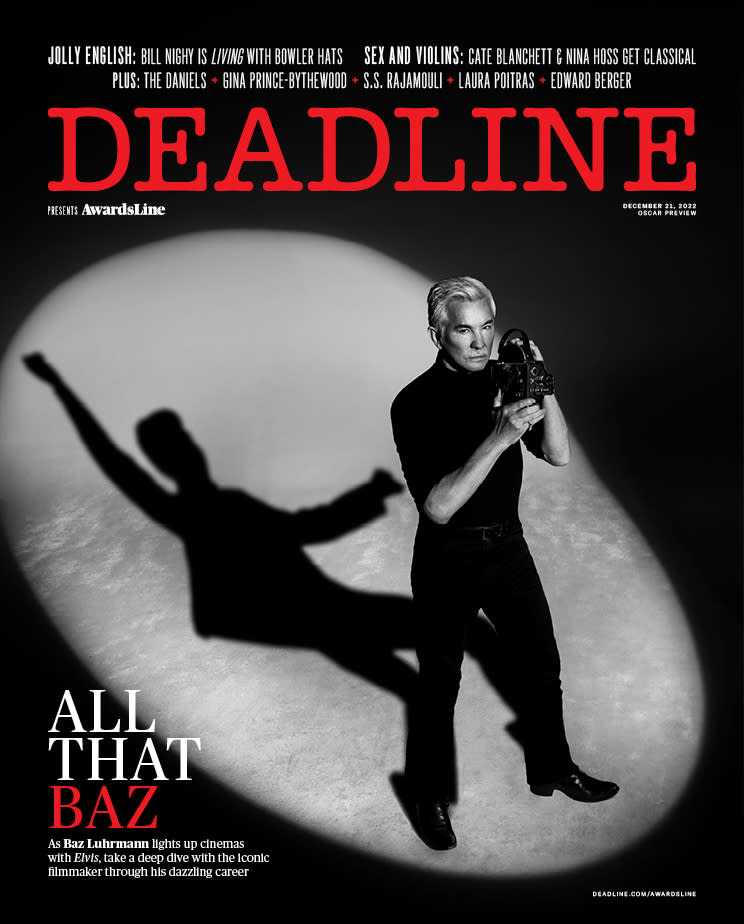
DEADLINE: One last question: what’s your dream project?
RAJAMOULI: Like I said, for a long time I wanted to do a big-scale war film, but that I have done with Baahubali, so my goal, or my dream, has been fulfilled. So, the biggest one for me would be to direct Mahabharata, the Indian epic. That would probably be a 10-year project. That would be my biggest dream. Hopefully, one day I’ll do that.
DEADLINE: Do you think audiences are ready to go back to the big-screen experience?
RAJAMOULI: They are. They will. They’re already going to the big screens. The experience of watching a film in your home, or on your small screen, is not going to give you the essence of the movie. You have to make people feel like they have to go to the theater and watch it. If you can give them that confidence, if you can give them that push with your trailers and promotional stuff, they’re going to come to the theater space.
Best of Deadline
2022 The Year In Photos: Courtrooms, Kanye, Twitter, Tom Cruise & Zendaya
2023 Premiere Dates For New & Returning Series On Broadcast, Cable & Streaming
Sign up for Deadline's Newsletter. For the latest news, follow us on Facebook, Twitter, and Instagram.

